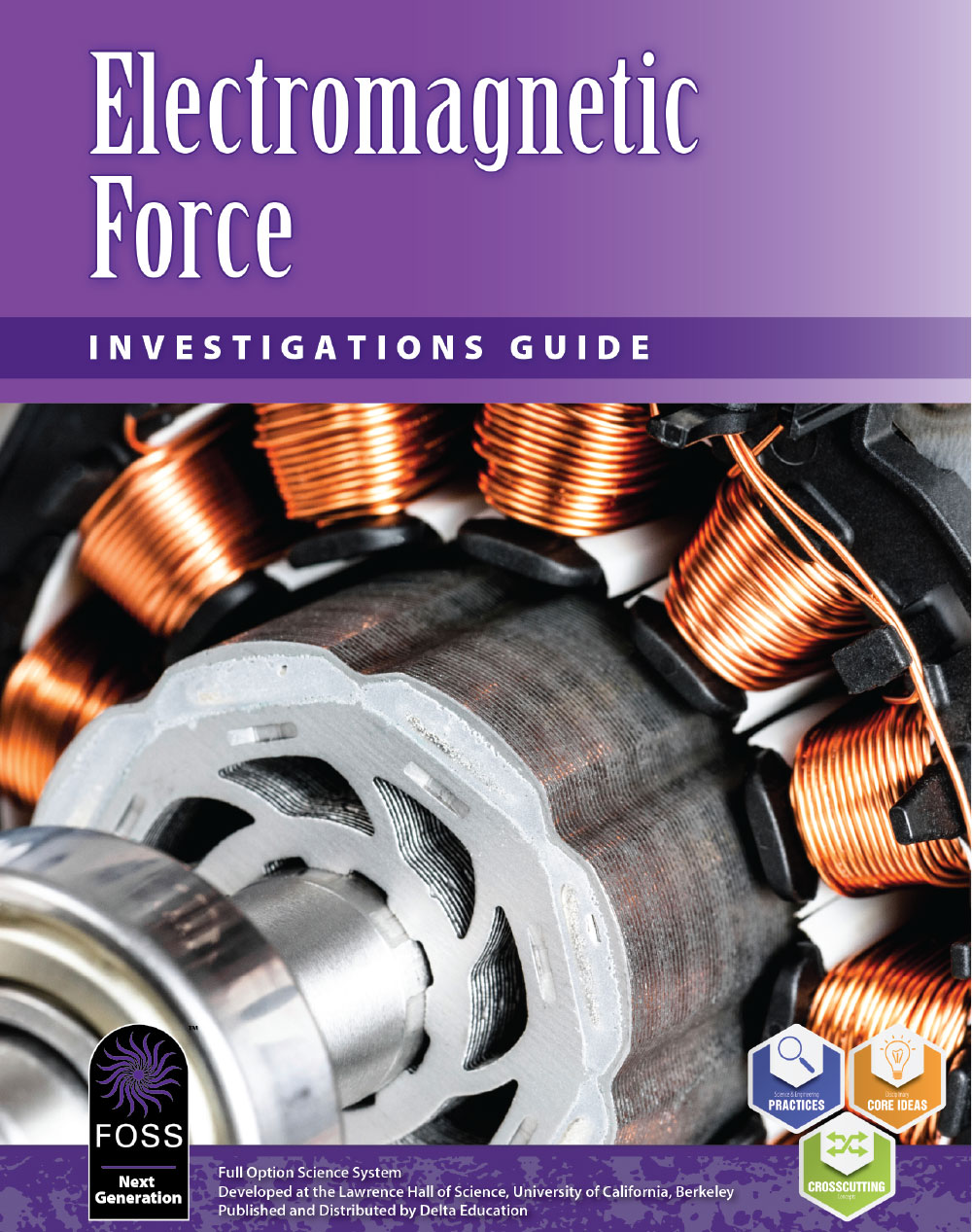FOSS Next Generation Electromagnetic Force
Grades 6-8

Electricity and magnetism are some of the most fascinating physics phenomena to study in a middle school classroom. In the six-week FOSS Electromagnetic Force Course, students will measure the force of invisible magnetic fields, learn to build a circuit, design an electromagnet, and explain the energy transfers that make it all possible. They manipulate equipment to collect data about magnetic fields and electricity. They construct explanations based on observable patterns and develop models that define the cause-and-effect relationships of the forces and interactions they are measuring.
Investigation 1: What is Force?
Introduce the idea of net force and explore friction as students measure the force needed to move loads on different surfaces and ultimately explain why force causes motion in some instances but not others.
Investigation 2: The Force of Magnetism
Students start this investigation with an exploration of evolutionary relationships. They examine a family tree and build a cladogram. Students build a model for how traits are inherited, starting with themselves and moving to a population of imaginary animals, larkeys. They learn about the basis of heredity, chromosomes and genes, and how genetic variation arises in populations. Students use Punnett squares to predict the probability of trait inheritance when the genetics of the parents are known.Explore the interactions of magnets and discover ways to detect invisible magnetic fields. Students measure the force of those magnetic fields and examine how the distance between magnets changes the force of attraction.
Investigation 3: Electromagnetism
Investigate electricity and energy in the context of circuits. Using electricity, students create temporary magnets and test variables that might affect the strength of their electromagnets, then work as a class to combine their results and determine the best design.
Investigation 4: Energy Transfer
Students operate and dissect an electric motor to explain how it works and describe its design and function in terms of components and energy transfers. They observe a generator and compare it to the electric motor. Finally, they consider energy sources for human use and use solar cells to power the electric motor.
Additional Investigations Guides are available for purchase through your local sales representative.